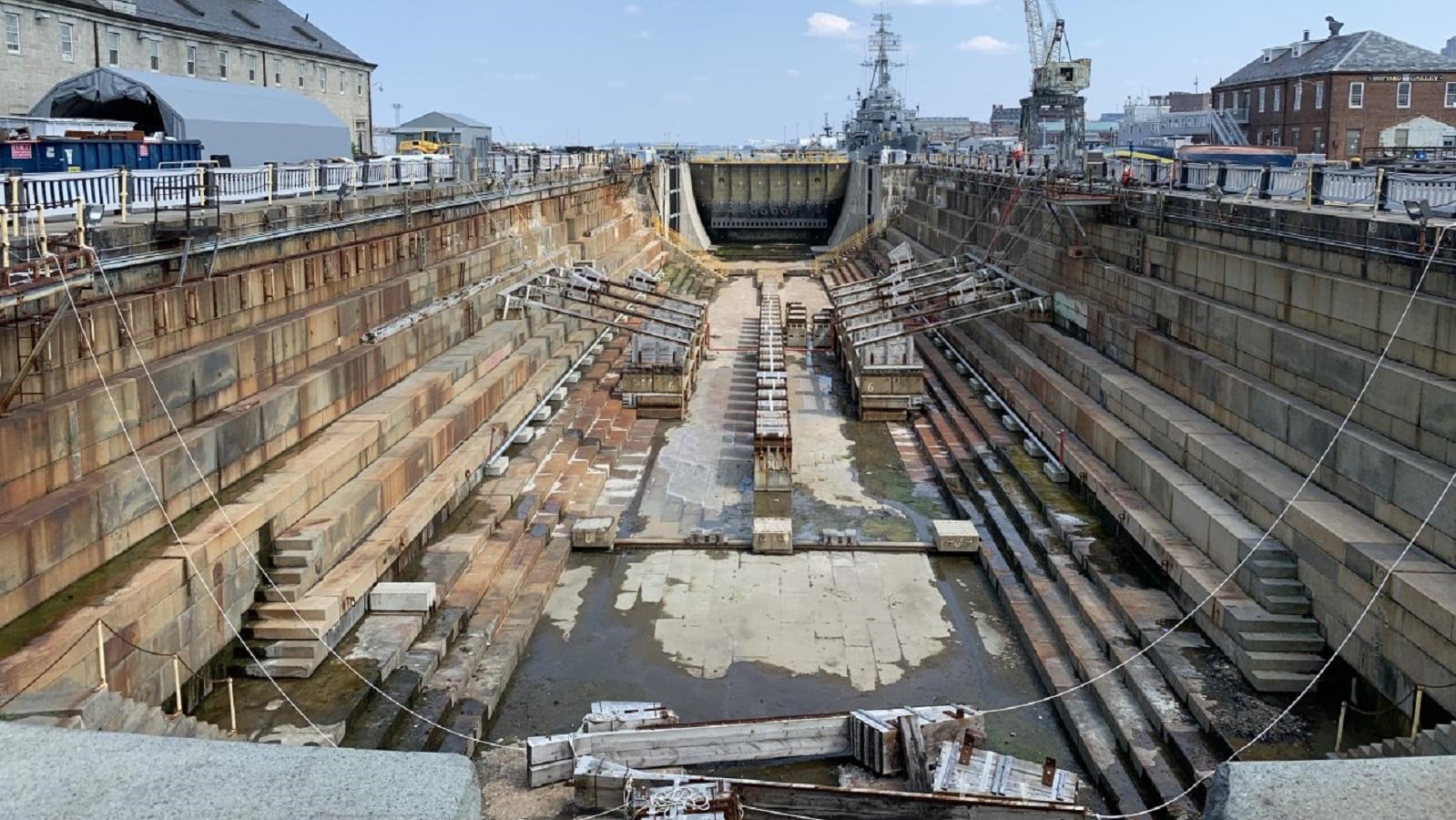Last updated: January 8, 2025
Place
Dry Dock 1

NPS Photo/Sullivan
Since its completion in 1833, Dry Dock 1 has played an integral role in shipbuilding at the Charlestown Navy Yard.
In the early 1800s, with the consequences of the War of 1812, the United States Congress sought to strengthen the United States Navy with more ships to defend the country. With this call for warships also came a need for appropriate dockyard facilities that could accommodate the construction and repair of larger vessels. As one of the six original naval ships yards in America, the Charlestown Navy Yard became host to another monumental undertaking. In March of 1827, Congress passed an act ordering for the design and construction of two stone dry docks: one at the Charlestown Navy Yard and the other at Gosport Navy Yard in Virginia.
The man tasked with overseeing the construction had ties to both the American Revolution and Charlestown. Loammi Baldwin Jr., leading citizen of Charlestown and son of a Revolutionary War veteran, served as the engineer commissioned by the Navy. Worldly and experienced, Baldwin played an integral part of the design and completion of the Bunker Hill Monument. He carried a similar drive into the construction of the two dry docks with identical plans. Work began on the Charlestown Dry Dock in June of 1827, with granite being drawn from nearby Quincy, Massachusetts.1
It took six years of labor to complete construction of the dry dock at the Charlestown Navy Yard. When it opened in 1833, Dry Dock 1 received its first warship, Frigate USS Constitution. The completion of the dry dock cost the Navy just under one million dollars.2 The sturdy construction impressed all that witnessed. Scottish engineer David Stevenson remarked on a visit in 1837 that the Charlestown and Gosport dry docks were, "The finest specimens of masonry which I met with in America."3
Baldwin designed the dry dock as a three-sided basin, with a plug or caisson on the seaward side. While its concept is simple, the dry dock required a complex engineering system to make it functional. First, workers floated a ship into the dock before the caisson sealed off the basin from the sea. Then a series of tools acted as a well-coordinated machine to drain the dock of water. Finally, the vessel was settled on a cradle to make its hull accessible for service.
For over one hundred and forty years, Dry Dock 1 has serviced U.S. Navy ships, particularly during times of war. One of the ships built at the Navy Yard was the USS Hartford, flagship of Admiral David Farragut during the American Civil War. Following the end of the nations bloodiest conflict, the Navy Yard was reduced in capacity and labor as demand decreased. Though there was a upswing in work during World War I, economic downturn slowed work down to a crawl. The coming of World War II brought the yard to full capacity, with workers using Dry Dock 1 to construct and repair ships. To support these needs of the Yard, Dry Dock 1 has been expanded throughout its history. Originally built at three hundred and five feet, the granite dock now stands just shy of four hundred.4
Though no longer in official use since the yard's closure in 1974, Dry Dock 1 still serves purpose to this day. Visitors may see the dock in use for repair work on Constitution and USS Cassin Young (DD-793). It serves also as a reminder of the roots of the United States Navy and the civilian laborers who poured sweat and soul into their craft.
Learn more...
Charlestown Navy Yard: Dry Dock 1
Footnotes
- Richard D. Hepburn, P.E., History of American Naval Dry Docks (Arlington, VA: Noesis, Inc., 2003), 15.
- Hepburn, History of American Naval Dry Docks, 20.
- Hepburn, History of American Naval Dry Docks, 23.
- Boston National Historical Park, Charlestown Navy Yard, (Washington, D.C.: Division of Publications, National Park Service, 2010), 40-41.
Bibliography
- Boston National Historical Park. Charlestown Navy Yard. Washington, D.C.: Division of Publications, National Park Service, 2010.
- Boston National Historical Park. "Loammi Baldwin Jr." National Park Service. Accessed September 1st, 2021. https://www.nps.gov/people/loammi-baldwin-jr.htm
- Hepburn, Richard D., P.E. History of American Naval Dry Docks: A Key Ingredient to a Maritime Power. Arlington, VA: Noesis, Inc., 2003.
- Moore, Richard. USS Cassin Young in Dry Dock 1 at Night. Photograph. Wikimedia Commons. https://commons.wikimedia.org/wiki/File:USS_Cassin_Young_in_Dry_Dock.JPG
